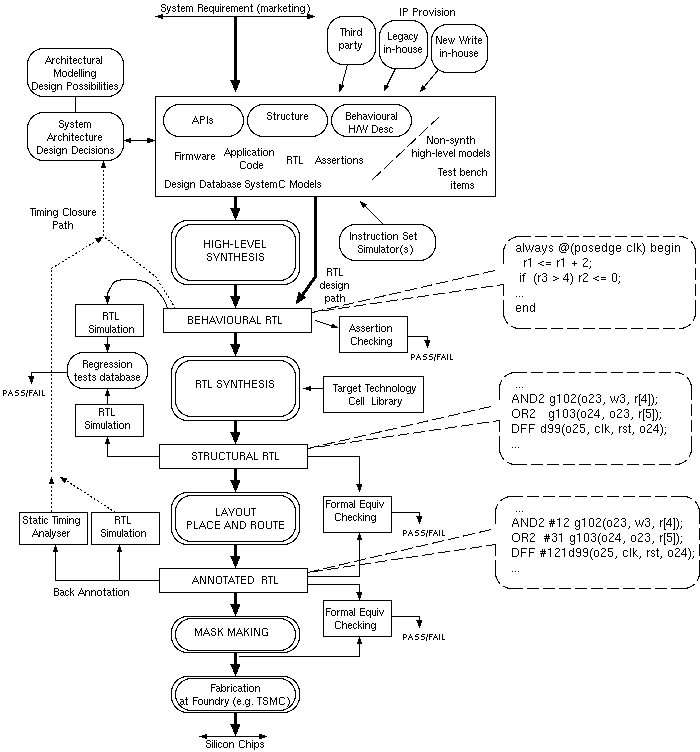
Once the system has been placed and routed, the length and type of each conductor is known. These facts allow fairly accurate delay models of the conductors to be generated.
The accurate delay information is fed into the main simulator and the functionality of the chip or system is checked again. This is known as back annotation. It is possible that the new delays will prevent the system operating at the target clock frequency.
The marketing department have commonly pre-sold the product with an advertised clock frequency. Making the actual product work at this frequency is known as meeting timing closure.
With low-level RTL, the normal means to achieve timing closure is to migrate logic either side of an existing register or else to add a new register - but not all protocols are suitable for registering.
With transactional interfaces, a one-place FIFO can help with timing closure.

| 57: (C) 2008-16, DJ Greaves, University of Cambridge, Computer Laboratory. | Flash Player Upgrade Needed |